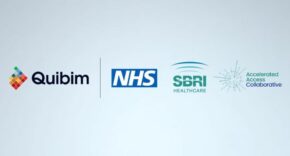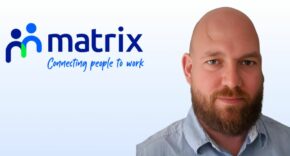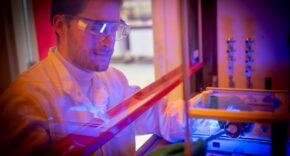Microsoft UK held a two-day conference ‘Microsoft Future Decoded’ to deliver a number of top-level keynotes, breakout sessions, networking, plus an expo that provided the delegates with high-level information and practical advice needed to help grow businesses in the changing world of Digital Transformation and AI. Microsoft’s CEO – Satya Nadella used CM’s case study with Loreburn Housing Association and their falls prevention technology solution, ARMED, in his keynote speech.
Today, digital technology and computing is being embedded into all aspects of our lives. Every part of the world is being digitised and transformed by digital technology. The opportunities which lie ahead are being referred to as ‘tech intensity’, where every person will have to build their own digital capabilities on top of the technology that’s already been adopted – this single formula will define how we capitalise on such incredible opportunities and how technology must to be adopted and utilised to deliver digital transformation outcomes.
During his session, Mr Nadella said he had seen many examples of technology being used by organisations and the many unexpected benefits that this can bring and highlighted that one of the key challenges that needs addressing is whether progress and technological advances can reach segments of our economy and societies where market economics simply don’t work.
He said:
“Cutting edge technology needs to be available to non-profits, charity organisations [as well as formal statutory health & social care services] who can also deploy it and reap the benefits. Because unless we do that, this technology is going to be a factor of production in one part of our economy and won’t have its impact broadly felt. This is what we have seen with Loreburn Housing Association. I had the chance to learn what they were doing, but more importantly what the technology provider CM(2000) is doing to help with the epidemic of falls among the elderly.
If we think about it, falls can lead to fatalities, but even if it’s not a fatality, one of the challenges of an elderly person falling is the healthcare challenge that then ensues. The best way to deal with this is to have preventative care, delivered through sensors, wearable technology that works through machine algorithms. If they can deploy a wearable that can detect a fall before it happens and then go beyond the fall itself by detecting other conditions and then have, in this case Loreburn, provide better care for people who are in their housing facilities which is exactly what they are rolling out with CM(2000).”
Seeing technology being used even where traditionally it is not at the forefront of an organisation where markets incentives, by themselves, do not work means that we have reached that threshold of really broad ubiquitous use of technology. To me, this needs to be celebrated and is the core goal of what we want to do and comes back to Microsoft’s mission – To empower every person in every organisation in the UK to be able to achieve more through digital technology.”
ARMED (Advanced Risk Modelling for Early Detection) combines pioneering predictive analytics modelling with innovative wearable technology, and health and social care data, providing a powerful tool to identify risks earlier in the care cycle, including the risk of falling. The wearable device detects early indicators of frailty, such as low grip strength, muscle mass, hydration levels, low heart rate and heart rate variability. Predictive analytics modelling – developed in partnership with Edinburgh Napier University – then uses data to predict the risk of a potential fall and allow intervention. Examples of this are now demonstrating escalations of risk being identified up to 32 days in advance of previously identified falls.











